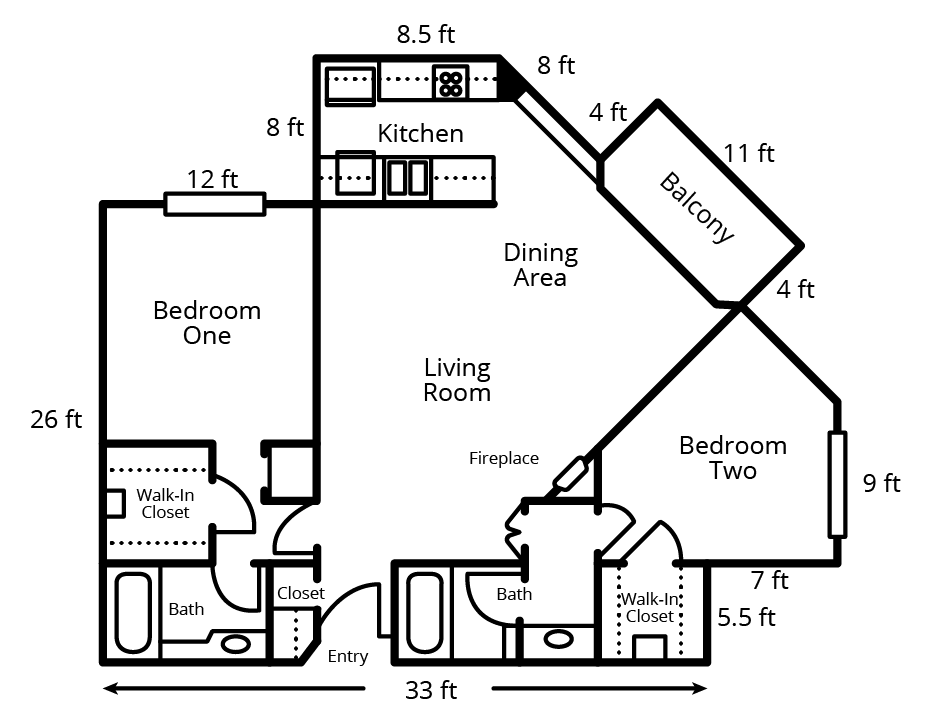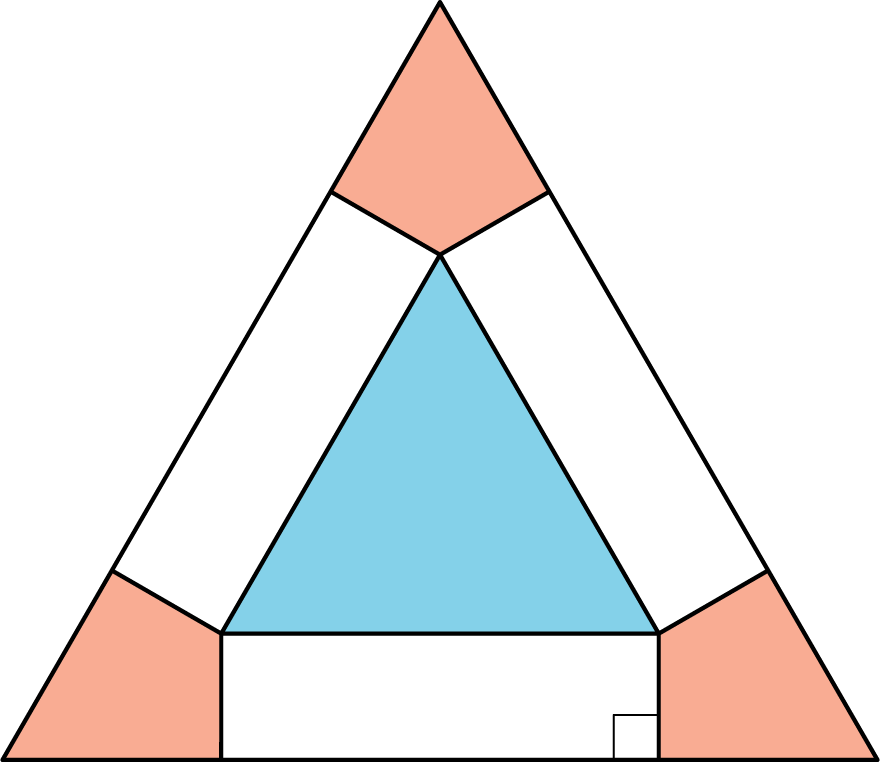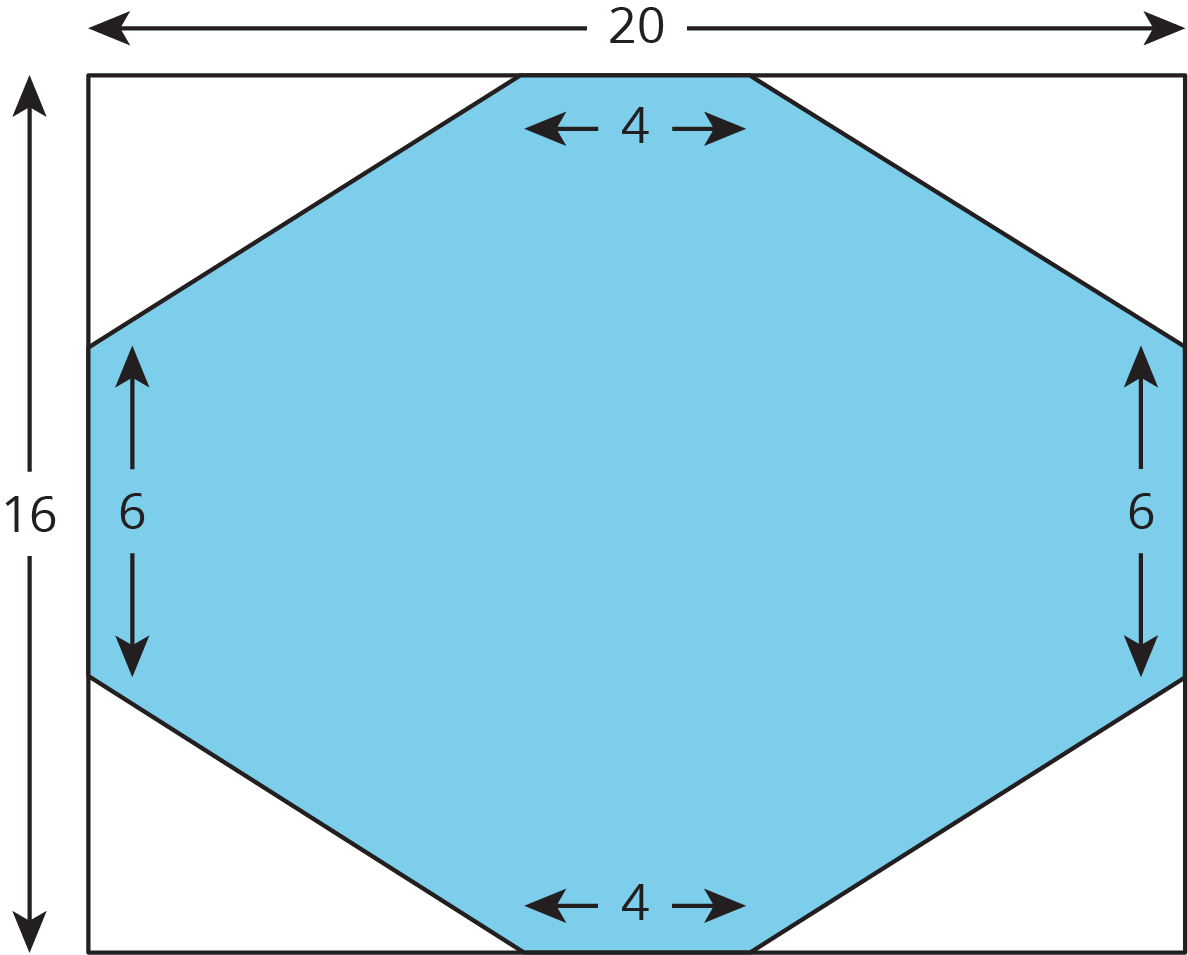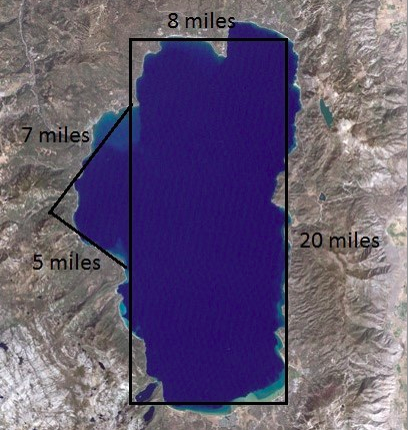6.1: Mental Calculations
Find a strategy to make each calculation mentally:
- $599 + 87$
- $254 - 88$
- $99 \boldcdot 75$
Let’s estimate the areas of weird shapes.
Find a strategy to make each calculation mentally:
Here is a floor plan of a house. Approximate lengths of the walls are given.

Estimate the area of Nevada in square miles. Explain or show your reasoning.

The two triangles are equilateral, and the three pink regions are identical. The blue equilateral triangle has the same area as the three pink regions taken together. What is the ratio of the sides of the two equilateral triangles?

We can find the area of some complex polygons by surrounding them with a simple polygon like a rectangle. For example, this octagon is contained in a rectangle.

We can estimate the area of irregular shapes by approximating them with a polygon and finding the area of the polygon. For example, here is a satellite picture of Lake Tahoe with some one-dimensional measurements around the lake.
 Aerial photo of Lake Tahoe
Copyright Owner:
US Geological Survey
License:
Public Domain
Via:
US Geological Survey
Aerial photo of Lake Tahoe
Copyright Owner:
US Geological Survey
License:
Public Domain
Via:
US Geological Survey